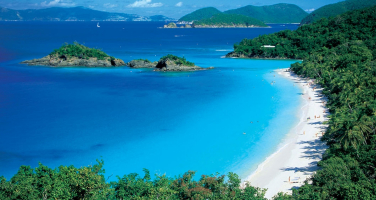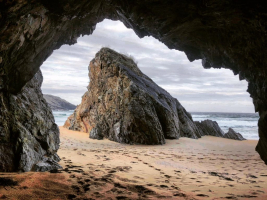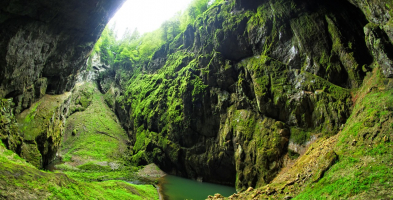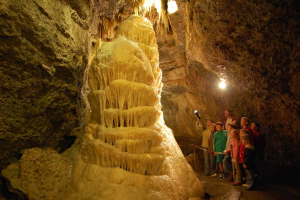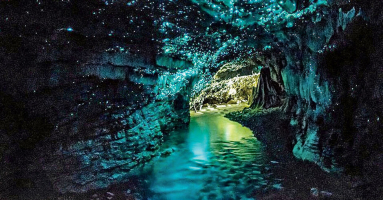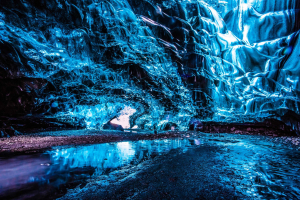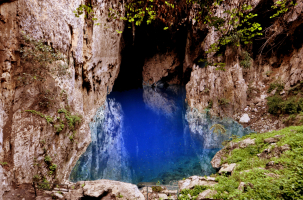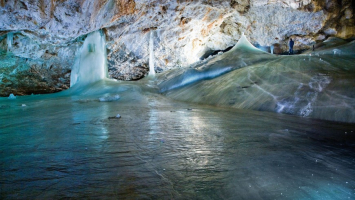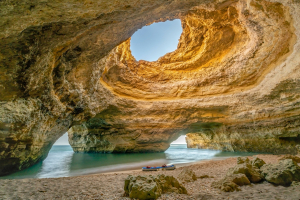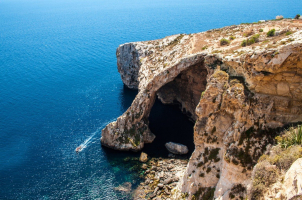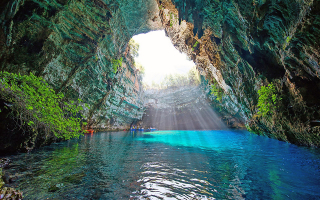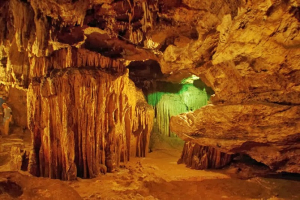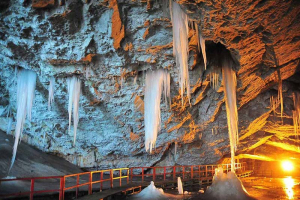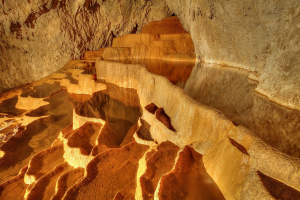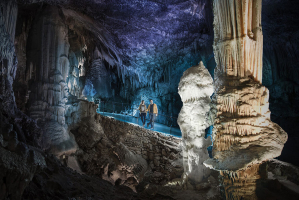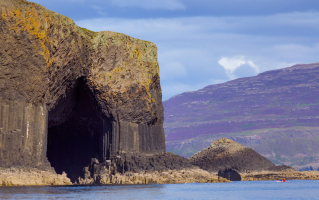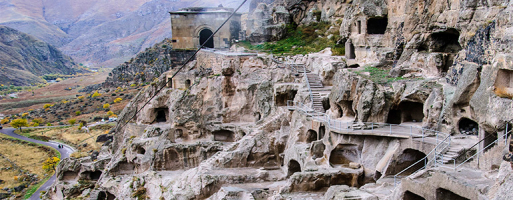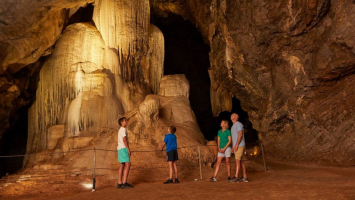Top 10 Beautiful Caves in Myanmar
Myanmar is endowed by the Creator with impressive caves. Many caves are famous tourist attractions attracting tourists from all over the world to visit. There ... read more...are top 10 best caves in Myanmar. Let's discover now!
-
Pindaya lies in the western part of the state, in the Taunggyi District's Pindaya Township. It is most known for the Pindaya Caves, a series of limestone caves where thousands of Buddha images have been consecrated for devotion throughout the years. It is also one of the cities that hosts an itinerant market every sixth day. The Pindaya Caves, located a short 45-minute walk from town, are the town's most well-known attraction. The PlanBee Beekeeping Center is a lesser-known attraction. Visitors can sample and purchase pure organically produced local honey and other bee products while sipping coffee and admiring the stunning scenery of Pone Taloke Lake.
The name comes from a mythology about a huge spider that used to live in the caves and had kidnapped a local princess. The princess was saved when the huge spider was killed with a bow and arrow by a prince. When the spider was killed, the prince was believed to shout, "I have taken the spider, that is to say, I have killed it!" As a result, the shout became the name of the region, and Pindaya was born.
Location: Taunggyi District's Pindaya Township
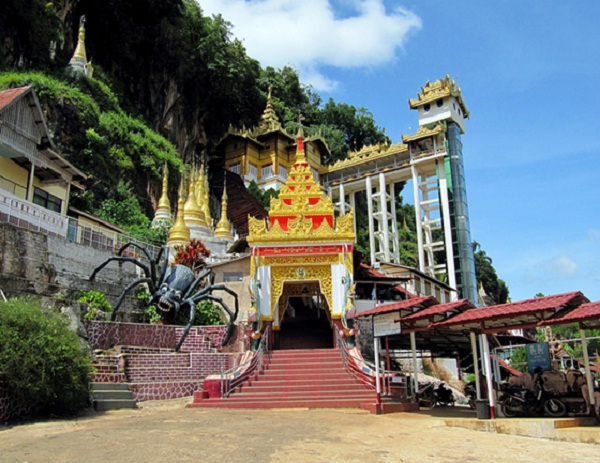
Source: Myanmar Travel 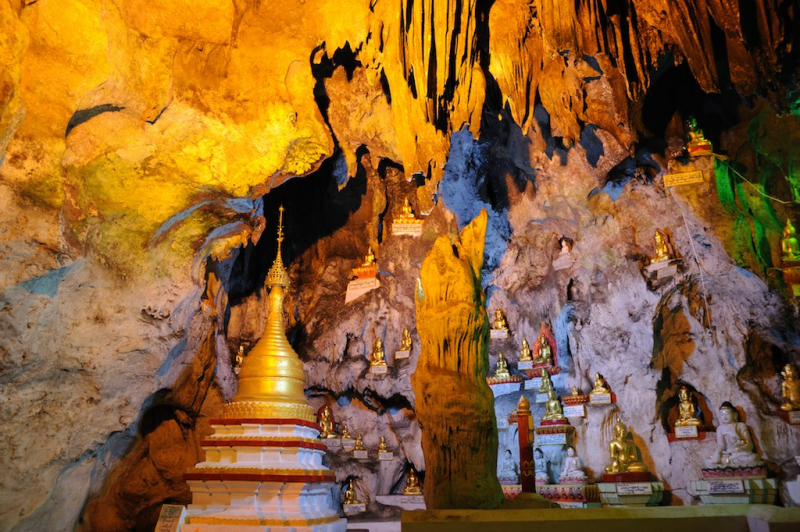
Source: GoAsiaDayTrip -
Sadan Caves is a Buddhist cave temple with hundreds of little and large Buddha statues. Inside the massive entrance hall, there are even some pagodas. A reclining Buddha statue and a natural rock with a Buddha face are highlights. To enter the temple, you must remove your shoes and leave them at the entrance. This isn't a major deal on the temple's tiled floor, but the display cave begins at the temple's end.
A concrete path with iron fence descends down a main passage teeming with bats. The bat guano has made the floor damp and slick.
It takes roughly 20 to 30 minutes to walk through Sadan Caves. Although the temple is beautifully illuminated, the cave behind it can be dimly lit at times, so carry a lamp. A modest jetty with wooden canoes is located at the cave's far end. The boats will take you back to the gate for a charge.
The journey back is almost as interesting as the journey forward. The boats return via a river cave that joins two lakes on opposing sides of the karst tower. A sheer rock face with a black ledge at the bottom may be seen from the jetty.
Location: Hpa-An, Myanmar
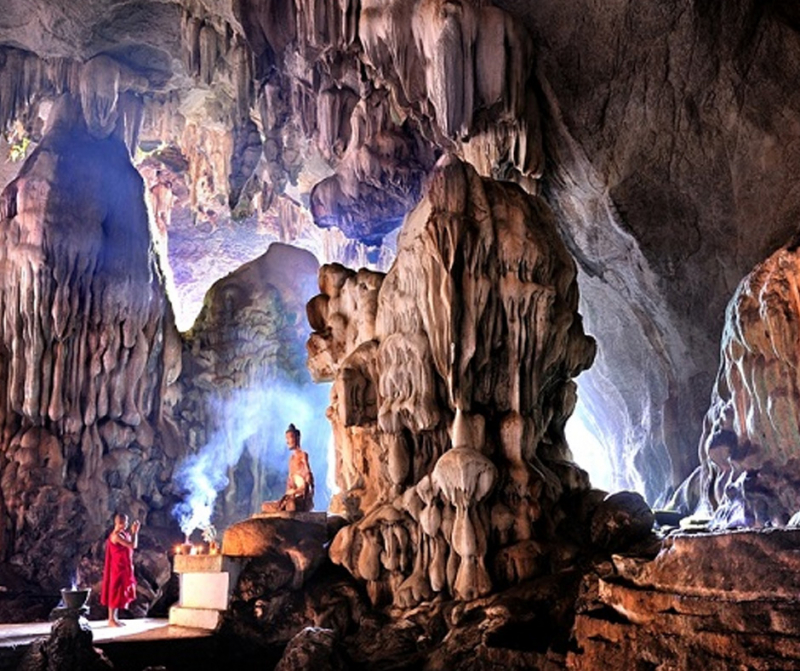
Source: Thuta Travel 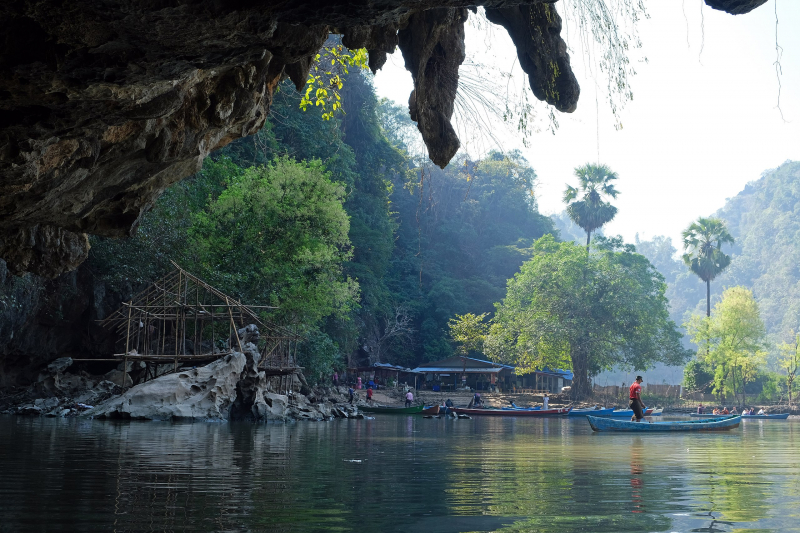
Source: Wikipedia -
Phowintaung Cave is a Buddhist cave complex in Northern Burma. It is situated on the Chindwin River's western bank. The complex's name translates to "Mountain of Isolated Solitary Meditation."
There are 947 small and big caves in the complex, many of which are lavishly adorned. It is carved into a sandstone outcropping and has multiple carved Buddha sculptures as well as geometric designs and Jataka tales mural paintings. The statues and paintings are thought to date from the 14th through the 18th centuries.
It can be reached directly from Monywa via the new bridge or by taking a boat across the Chindwin and then hiring a vehicle at the lovely Nyaungbin settlement.
Other Buddha statues have been carved into sandstone outcrops at the Phowintaung caves, along with several mural paintings of geometric patterns and scenes from the Jataka story.
The Jataka tales are a large collection of Indian literature that tells stories about Gautama Buddha's previous lives. These legends describe Buddha's prior lives as both a person and an animal. Buddha appears in several incarnations in this literaure, such as a monarch, an elephant, an outcast, and even God.
Location: Monywa District, Sagaing Region
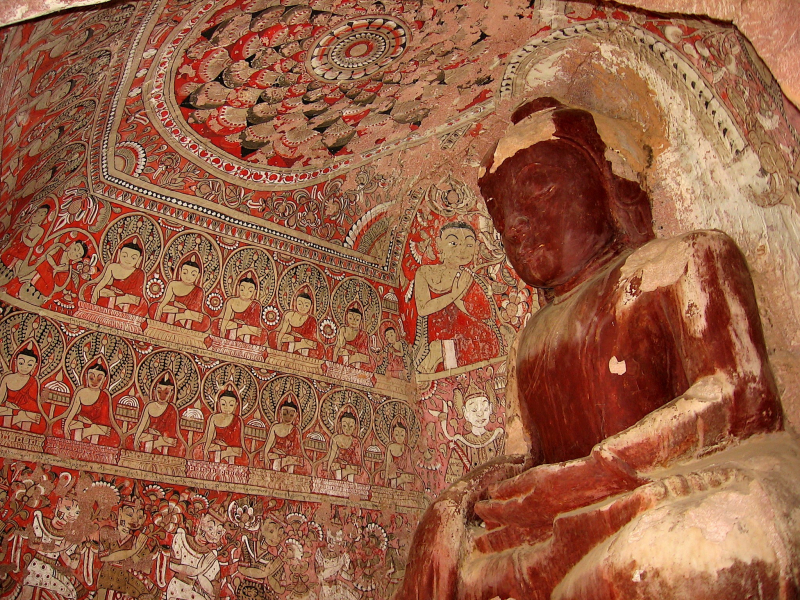
Source :Wikipedia 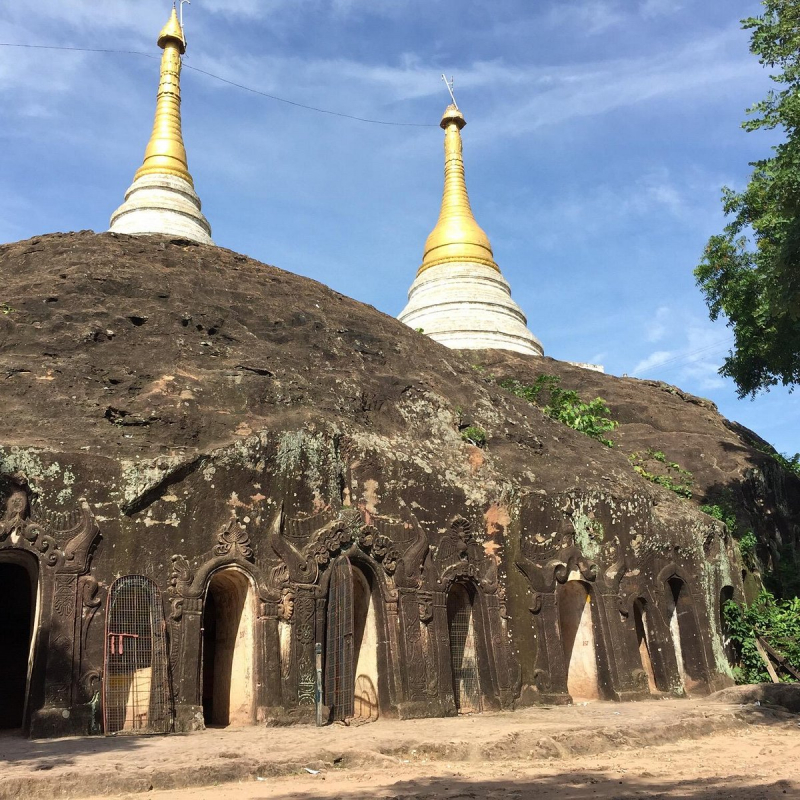
Source: TripAdvisor -
Kawgun is a small limestone outcrop just over the river from Hpa-an off the Thaton Highway, and it is one of the region's most magnificent caves. The Kawgun caverns and limestone cliffs are lined with amazing Buddhist carvings and stucco work, which are thought to date back to the seventh century. A few ancient Hindu images survive, attesting to the region's historical religious pluralism. For the area's previous Mon occupants, this was formerly a sacred location. It houses a variety of seated and reclining Buddha figures, but the cavern's walls and roof, as well as the neighboring limestone cliffs, are alost entirely covered in red-painted stucco pictures.
Many of the carvings and stucco masterpieces are disintegrating in front of our eyes as not only the mortar but even the brittle limestone rocks themselves disintegrate. The stalactites clinging to the rock face and dripping with water during showers suggest that the entire site is still a work in progress. Kawgun cave is surrounded by a big Buddhist temple complex, and while there are a few snack and drink kiosks outside, be cautious because there is a large population of macaques!
Location: Hpa-An, Myanmar
Source: Smithsonian's National Zoo 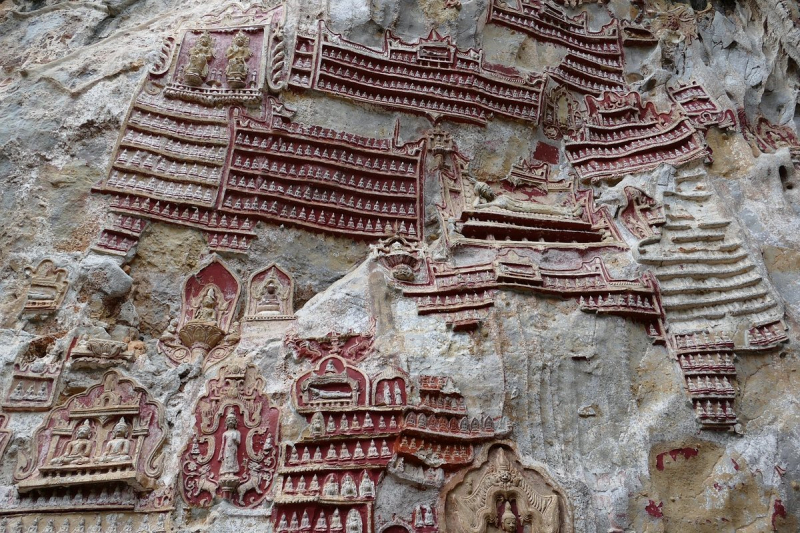
Source: TripAdvisor -
Bat Cave, one of the must-see attractions in Hpa An and home to a never-ending stream of over 100,000 bats, will undoubtedly satisfy adventurous visitors.
Bat Cave is a small cave located 9 kilometers from the city, along the Thanlyin River in Hpa-an, Kayin state. Nonetheless, guests are welcome to visit when hundreds of thousands of bats emerge from their cave at sunset. When the bats take to the air, they begin to beat drums, causing the bats to fly in interesting patterns for at least 40 minutes, not just five minutes. What a beautiful piece of nature!
Bat Cave, in particular, boasts a promontory with a wonderful view of the twisting, slow-moving river and an expansive meadow, in addition to bat watching. Although the climb is not lengthy, it is highly dangerous due to the poorly constructed ladder and steps. Remember to bring a flashlight and be extra cautious when driving back in the dark.
Although Hpa An is well-known for its natural wonders, including various limestone caverns, the unique beauty of landscapes around Bat Cave, as well as a breath-taking view of hundreds of bats leaping out of a cave beneath the pagoda platform, will leave you feeling truly fulfilled.
Location: Hpa-An, Myanmar
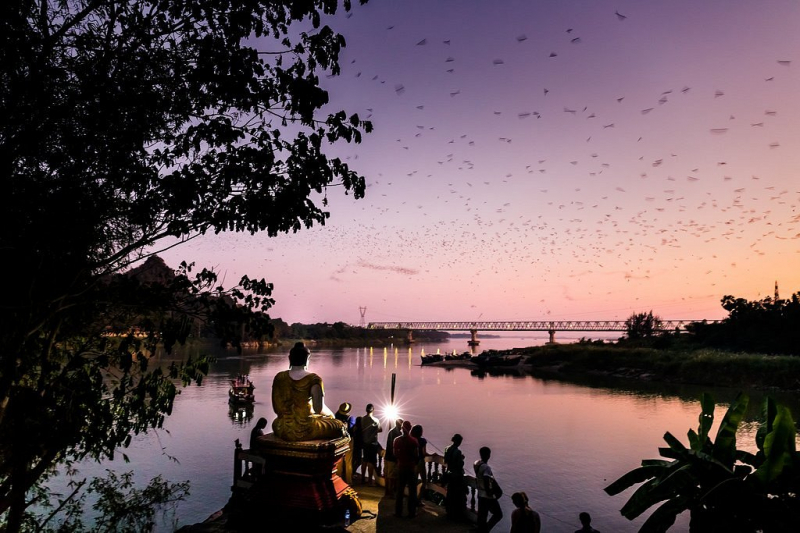
Source: TripAdvisor Source: Myanmar Travel Information, 日本語 & English -
Peik Chin Myaung is a limestone stalactite cave located 23 kilometers from Pyin Oo Lwin, Myanmar, south of Wetwun village. On the Lashio road, the cave is a popular tourist attraction.
Local Burmese Gurkhas first constructed the cave, which was eventually co-opted by the Myanmar government as a tourist destination in 1990.
Peik Chin Myaung Cave is 45 acres in size, and native plants called Peik Chin, which look like long pepper vines, used to grow by the cave's mouth. From the creation of limestone and hillocks, it is estimated to be 230 million to 310 million years old. It was given the name Maha Nadamu cave after shrines and many Buddhist stupas were built inside the cave.
Locals and numerous Myanmar pilgrims loved swimming at the cave's entrance. The 600 m (2,000 feet) deep cave's water flows and cascades. Many Pyin Oo Lwin residents have souvenir shops selling native products such as wine and dried game meat.
Location: south of Wetwun village, 23 km from Pyin Oo Lwin, Myanmar
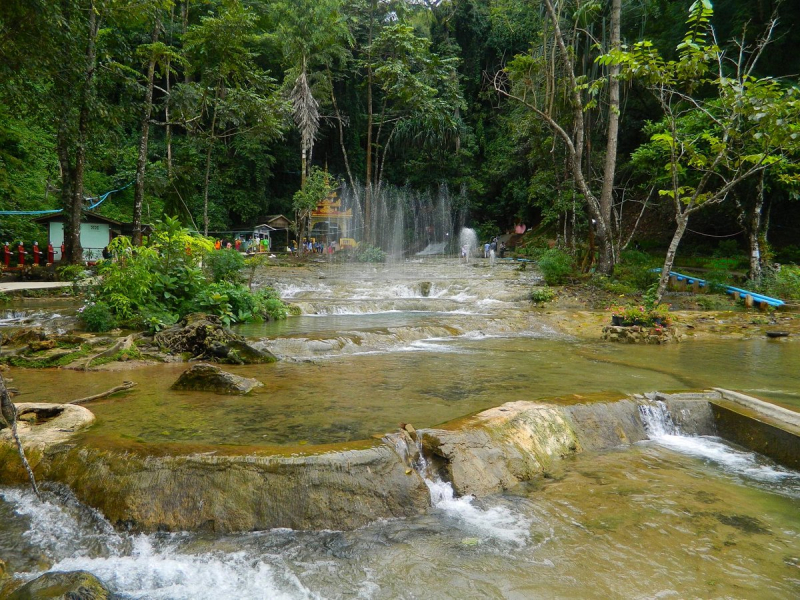
Source: TripAdvisor 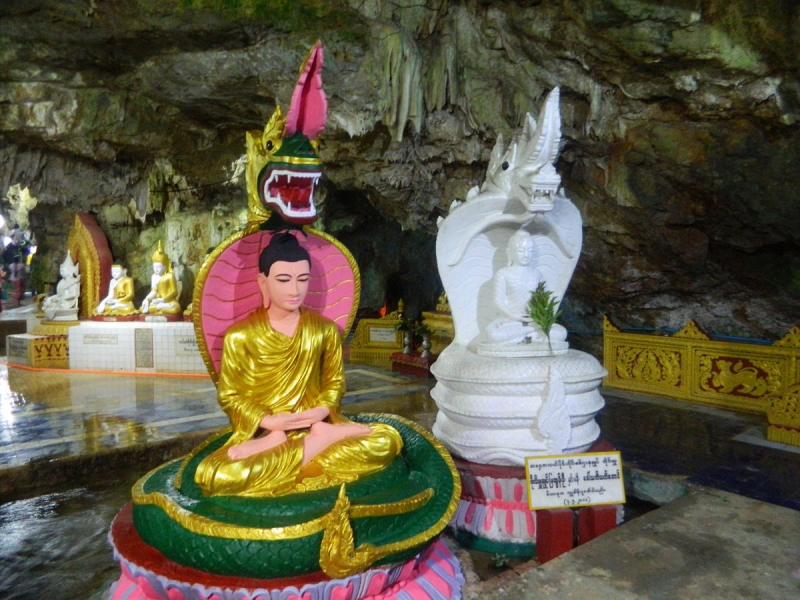
Source: TripAdvisor -
At the foot of towering limestone cliffs, Bayin Nyi Cave is home to an impressive and vast temple with an abundance of almost Disney-esque colorful buildings.
Because the cave is located on the route to Thaton, it is not included on all conventional Zwegabin excursions and receives fewer visitors.
While not as deep as the magnificent cave temples of Pindaya, the caves themselves are more extensive than many in the region, extending into the mountain and lined with numerous Buddha images. The cave's nickname, King's Brother Cave, comes from a tale surrounding it, according to which a member of the royal family hid in the cave to avoid pursuit.
The entrance to Bayin Nyi Cave is around halfway between Thaton and Bayin Nyi, so it's probably only possible to visit if you have your own vehicles.
Location: Hpa-An, Myanmar
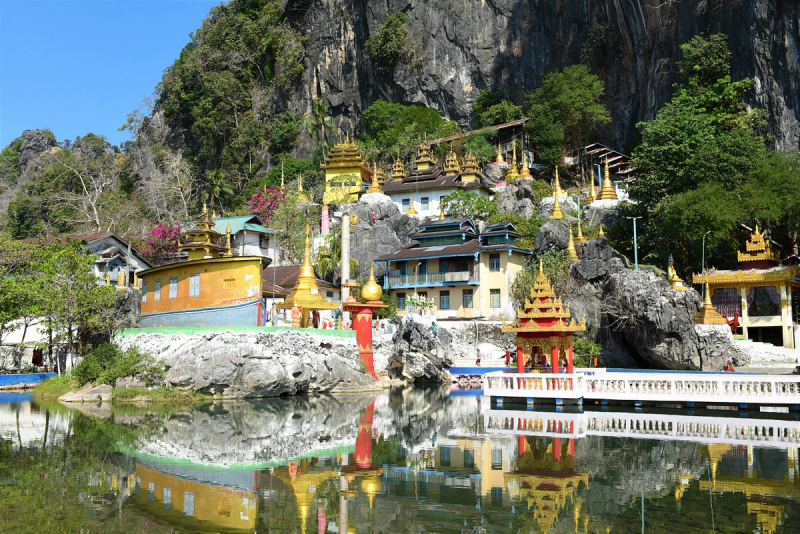
Source: TripAdvisor Source: In Locum Mundo -
The cave of Kaw Kathaung (or Ka Thaung) is located in a limestone outcrop to the north of Zwegabin. Another popular stop on every Zwegabin day tour is Kaw Kathaung. Outside the entrance to the tiny cave temple at the foot of the limestone cliff, there are several religious buildings and monuments, including an intriguing maze on the right just before the gate to the main compound. Following the rugged path down the cliff's base, you'll pass several additional shrines and small caves until reaching a sacred spring gushing from the rock face. This creates a clean pool at the base of the cliffs, which is popular with local bathers.
There are various cafes on bamboo stilts around the pool, but the stilts appear to function as much to raise the seating spaes above the mountains of trash as anything else. The cafés serve good Thai and local food and drinks, however they have a significant garbage problem. It's one of the most prestigious and well-known among local tourists, therefore on a busy day, Kaw Kathaung Cave may get quite crowded.
Location: Naung Lon, Myanmar
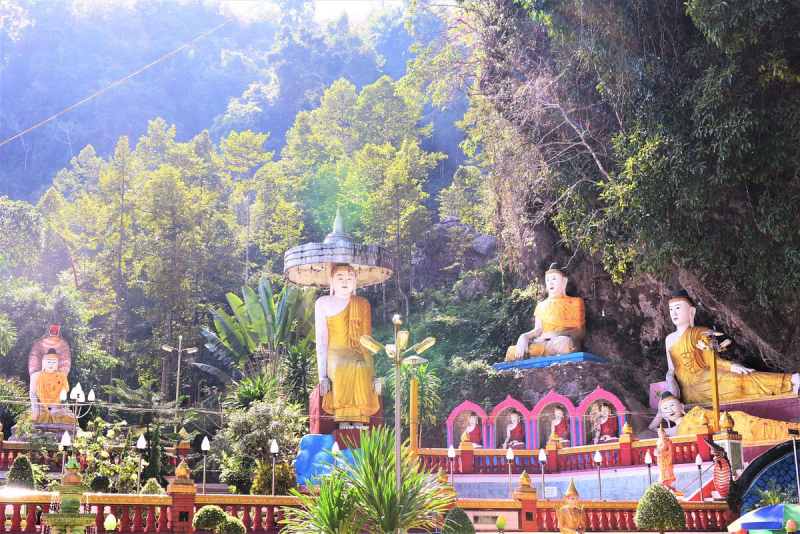
Source: TripAdvisor 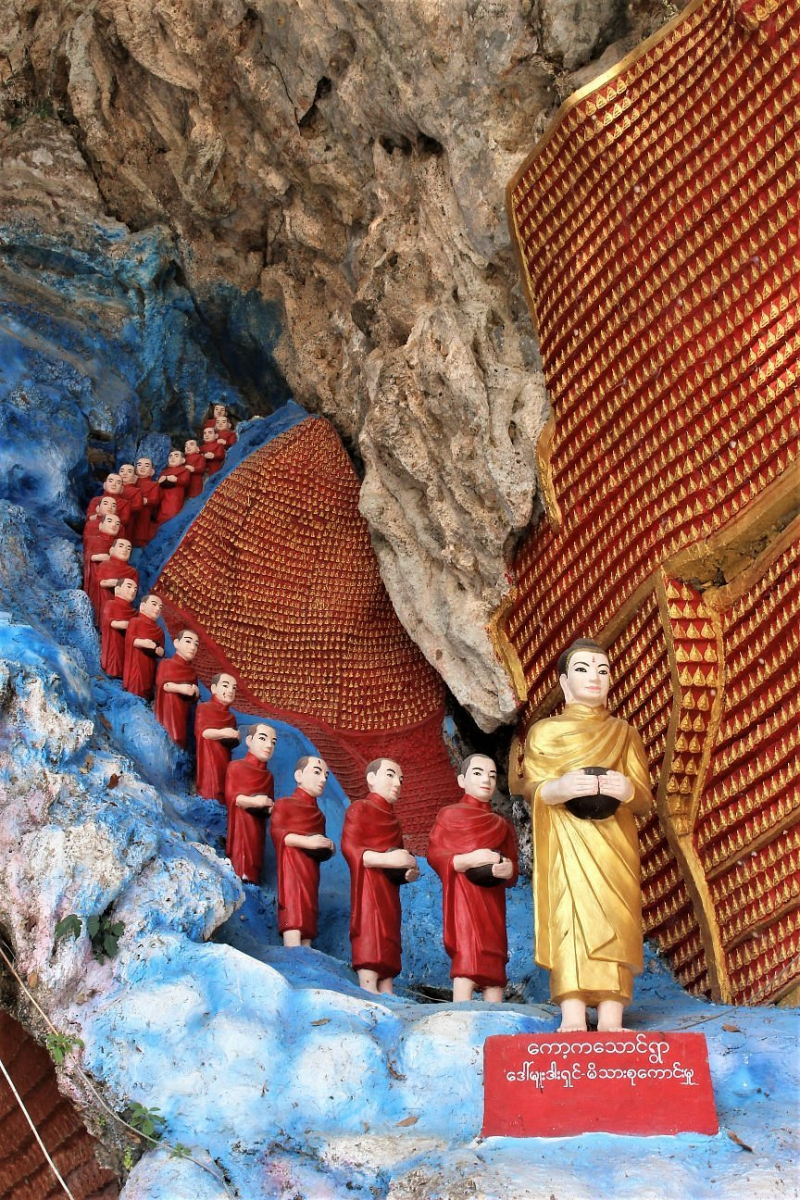
Source: TripAdvisor -
A young monk named Htam Sam discovered the cave. It was converted into a Buddhist temple, like all caves, however this one has fewer buddhas than others. It's a long passage that rises to a height of 10 meters, with a subterranean river running through it, making the floor wet and slick. This appears to be the reason why you are permitted to keep your shoes, which is a rare occurrence among westerners. There are 100 m wide and 10 m high chambers available. There's also a lot of clay that worshipers shape into little pagodas and hang on the walls as meritorious actions.
The Htam Sam Cave's custodian is an elderly beginner. According to mythology, if he was successful in his meditation, he promised to cut off a finger. He succeeded, and the finger was removed. This was actually a bad decision, because you can only beome a full monk if you are complete.
Location: Taunggyi - Tarchileik Road, Myanmar
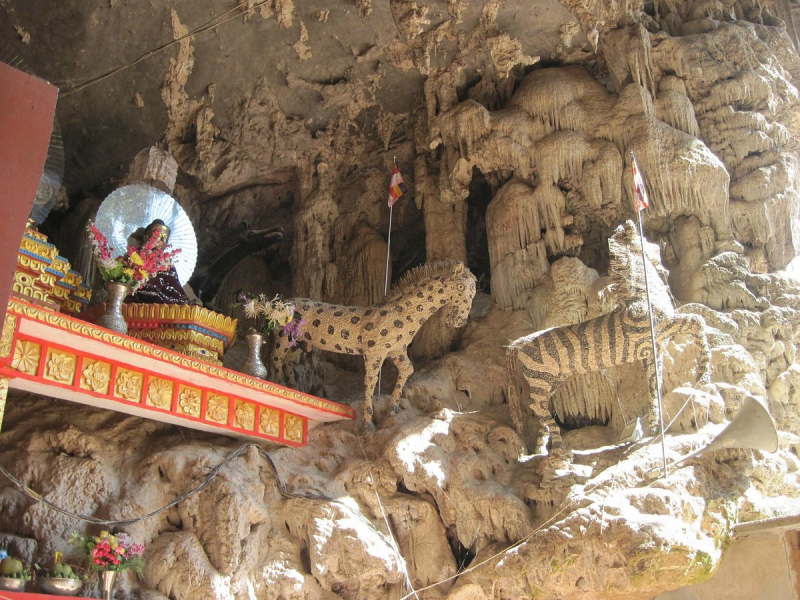
Source: TripAdvisor Source: Nang Khin Zay Yar -
The Naga Cave, located near Wat Tham Chai Mongkol, is a new attraction that was only discovered this year. It has rock formations that resemble Naga, the fabled giant serpent.
The "snake scales," which are actually sun-cracked limestone, are roughly 100,000 years old, according to officials at Phu Langkha National Park.
The rock expanded and contracted due to sharp temperature variations between day and night, cracking. Water corroded the fractures' edges, giving the rock the appearance of snake scales.
Phu Langka national park and the recently found Naga Cave, which contains rock formations resembling huge snake scales that have recently been scarred by visitors hunting for lucky lottery numbers, have been closed indefinitely by the environment ministry. He denounced the vandalism and stated that those with such terrible habits would not be welcomed.
Location: Yangon, Myanmar
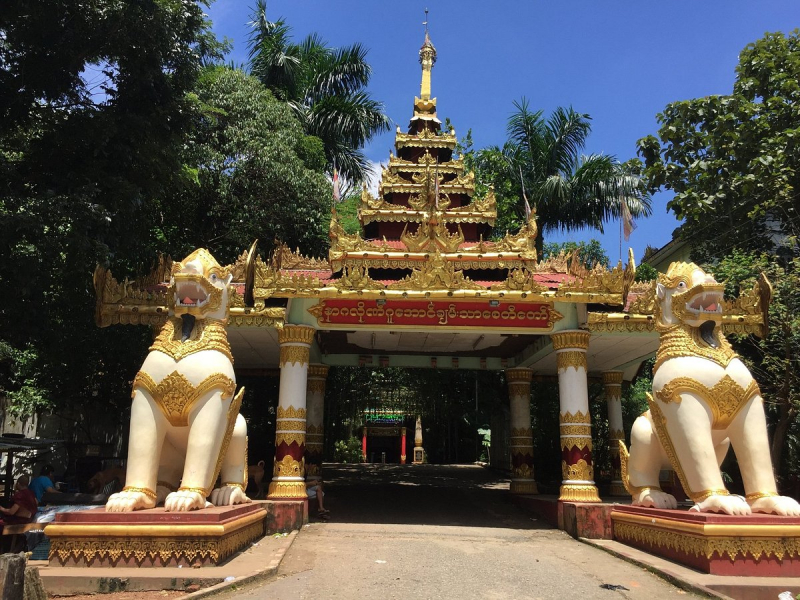
Source :TripAdvisor 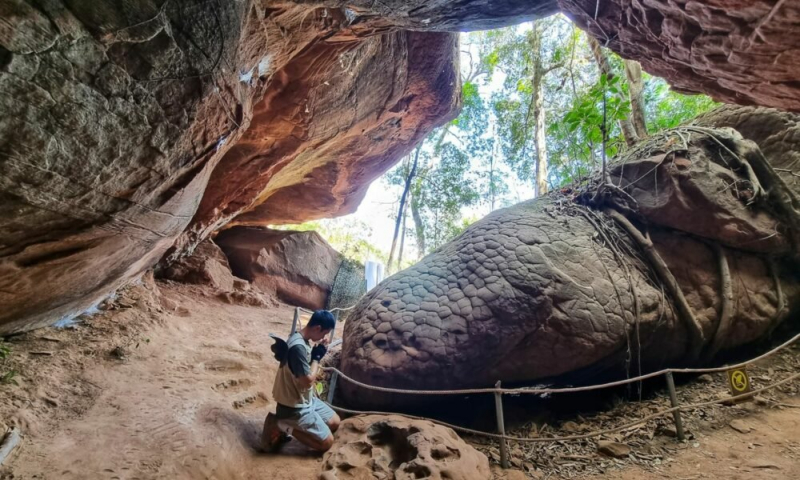
Source: Thaiger












